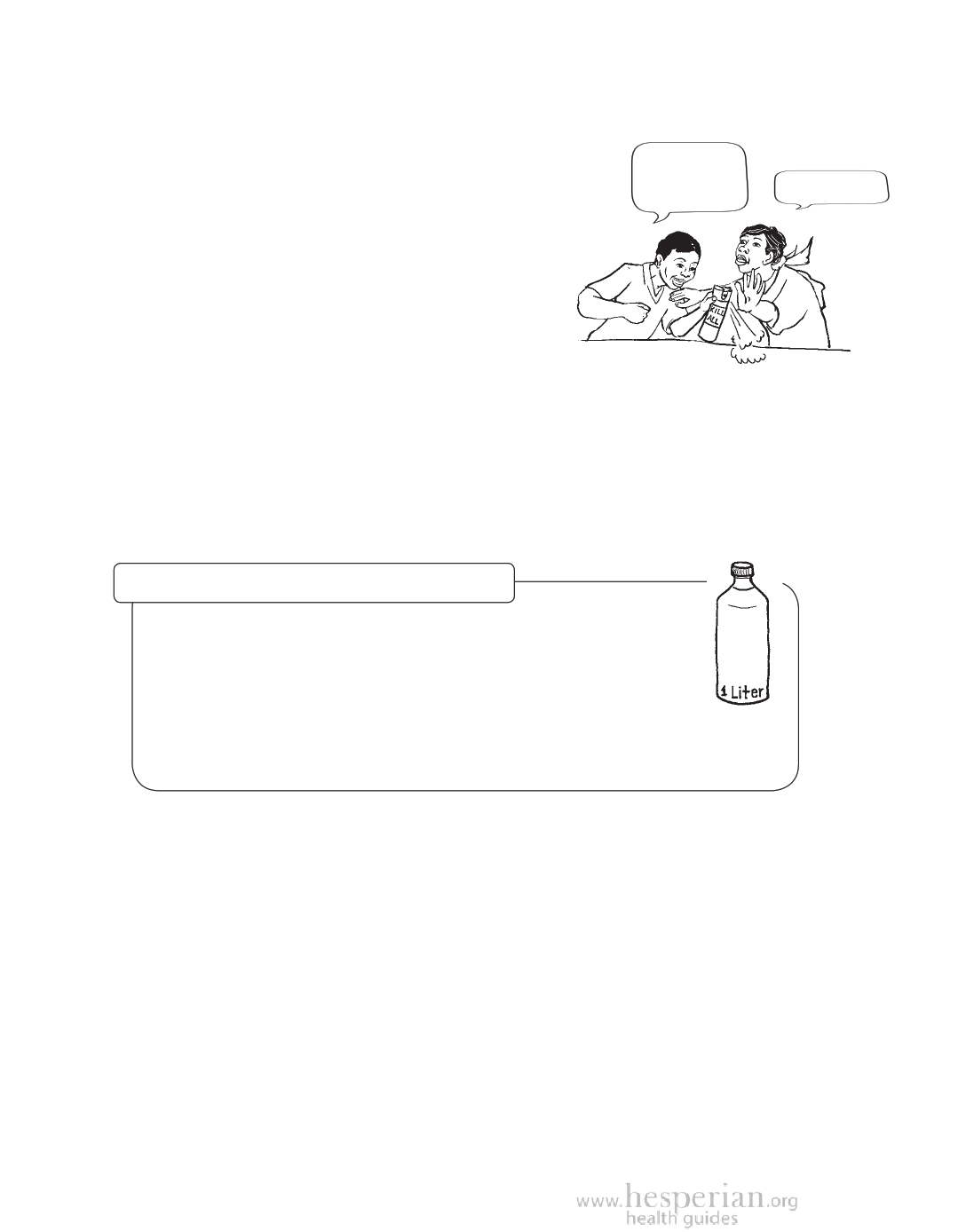
430 Health Care Waste
Disinfecting with safer chemicals
Some health centers use cleaning products
that contain harmful chemicals, such as
glutaraldehyde, to disinfect and clean (see page
440). But surfaces in health centers can be kept
clean and germ-free by using less dangerous and
less costly cleaning products. Hot water and soap
is effective for routine cleaning of surfaces such as
floors, walls, and furniture.
This stuff is
great! It kills
everything.
Including us!
In areas where people with infectious diseases
wait or are treated, it is important to use a
stronger disinfectant to prevent the spread of
disease. Hydrogen peroxide solutions that contain
When choosing a product, ask:
Is it harmful? Is it difficult to
dispose of safely?
orange oil and other natural oils are effective for disinfecting floors and
surfaces. They do not cause health problems and do not have to be treated
before disposal. A safe disinfecting solution can also be made with vinegar
and hydrogen peroxide.
How to make a safe disinfecting solution
Mix together equal amounts of white vinegar and hydrogen
peroxide. (A 3% peroxide solution is common, but 6% is better.) Mix
only as much as you need for one day. Keep it in a closed container.
Pour a small amount of the mixture on a wiping cloth and scrub the
surface to be disinfected with strong rubbing motion.
This mixture is best for use on tabletops, bed railings, and other surfaces.
Disinfecting with bleach
Many health centers use bleach to disinfect surfaces such as walls, floors, and
tables. Care must be taken when disinfecting with bleach because it can cause
harm to your skin and eyes if it splashes on you, and the fumes are dangerous
when breathed in. Adding white vinegar to the bleach makes it an even more
effective disinfectant.
A Community Guide to Environmental Health 2012